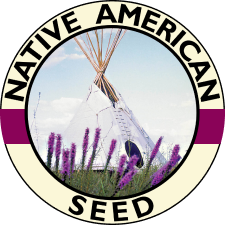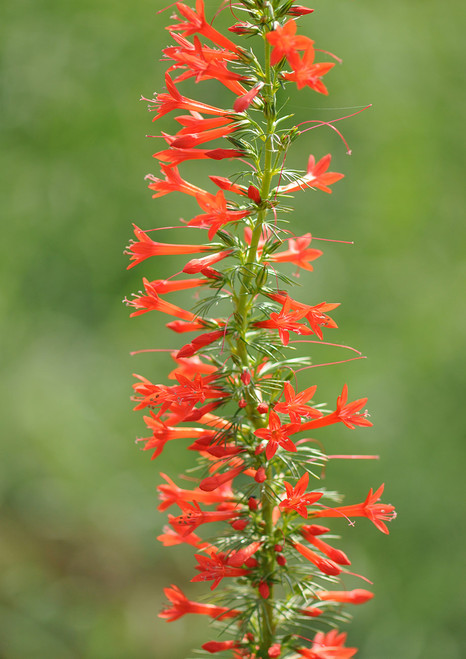This spectacular red flowering biennial attracts butterflies and hummingbirds galore! It thrives in a wide range of soils from caliche to rich bottom lands. Grows from North Carolina to Florida to Texas. Plants bloom the second spring after planting. After its blooming period the second year, the plant reseeds readily before dying. Seedlings can be transplanted in late fall. The plants are highly popular as cut flowers, often lasting a week or more.
The Natives are Friendly
Standing Cypress, Ipomopsis rubra, is a fabulous plant and is easily grown from a fall seeding. Texas Plume, Scarlet Gilia & Red Texas Star are some of the other common names that it goes by. This outstanding native likes a wide variety of soil types and moisture conditions. It ranges from North Carolina south to Florida and west to Texas. Growing to over six feet in fertile soil and moist conditions or staying a modest 2-3 feet in poor soil with dry conditions, it stands tall and strong. I have driven by this flower blooming thriving along a dirt caliche road in the hill country. In better growing conditions it has been known to flower in just one year. Typically it is a biennial, sprouting and staying low to the ground as a ferny rosette the first year then shooting up a flower spike and blooming the second year. To prolong the blooming period you can cut the first stalk back after it blooms and this will stimulate the plant to send up a second bloom stalk. The flowers bloom on a thick spike from the tip of the stem downward.
Hummingbirds find this plant absolutely irresistible and you’ll have hummingbirds galore all seeking a drink of nectar from the tubular shaped flowers. Sometimes in the evening the Hawks moth can be seen probing these flowers with its long proboscis.
After blooming, Standing Cypress reseeds readily providing years of seasonal color. There are other color variations ranging from brilliant red to orange to yellow. Native American Seed even has a mix available that has the red and yellow flowers. Plant Standing Cypress this fall and be prepared for an invasion of nectar loving wildlife in your landscape.























